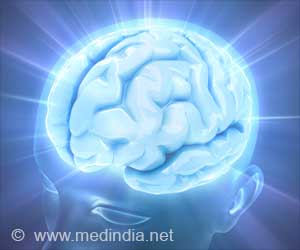Laughing keeps you in good health and The Laughing Club is all set on a rolling, laughing marathon through life to keep oneself hale and healthy.

“A day without laughter is a day wasted” ring the words of Charlie Chaplin. A happy person is a beautiful person, most anticipated guest to occasions. And laughter being the highest form of expression of joy and happiness also serves curative purposes. Dr. Mukund Mehta. M.D., the Founder and Convener of Laughing Club Ahmedabad, explains how a good hearty laugh offers health benefits at literally no cost. Author of ‘Fitness’, winner of the Gujarat Sahitya Academy in 1999, Dr. Mehta M.D. speaks to Medindia. Q. You are a medical doctor, a pathologist and a fitness specialist, how were you convinced about Laughter Therapy?
A. It began with the desire to do good to the society, to contribute beneficially to the overall well being of people. Most were not aware of their health problems and were not living life to the fullest. I would mention American psychiatrist, Dr. William Fry who used laughter as a therapy and observed people cured of physical and mental illnesses. Similar results were exhibited in patients of Dr. Robert Holden and Dr. Norman Cousins, both highly acclaimed in the field of medicine especially through Laughter Therapy.
Apart from my medical accomplishments, my experience stretches to 40 years in the realm of Exercise and Fitness since my training with Dr. Kenneth Cooper’s aerobic centre at Dallas, Texas. In my experience and extensive research I’m certain and have seen that Laughter Therapy along with a healthy diet has cured many ailments.
Q. Yoga is incorporated a lot in Laughter Therapy, so how much credit do you give laughter in the therapeutic process?
A. Any fitness programme has a whole body workout with 70% of aerobics, 15% of muscular workout and 15% to encourage flexibility. Before beginning the laughter therapy, the warm up exercises include drills for external and internal muscles, for joints and breathing. Once the laughter therapy session begins the blood circulation gets faster and travels to the brain instigating the chemical neuro-transmitters to function with a higher frequency. Endorphins secreted relieve pain and stress. Given my fitness training since 1986, I framed an apt mode for the needs of Laughter Therapy that’s seen today.
Q. How do you get a person to laugh when there’s nothing to provoke them to laugh? How does a person manage to continue laughing?
Q. Who are the most who seek and find remedy from Laughter Therapy?
Q. How should one laugh? What is the healthiest way to laugh?
A. I have developed 3 types of laughter: a) Atta Hasya [Full-hearted Laughter] b) Maun Hasya [Silent Laughter c) Ashwa Hasya [ Horse Laughter].
In three cycles of Laughter Therapy Exercises, warm up is done 63 times, three types of laughter are done 45 times and cooling down is done 45 times. The basic principle of Laughter Therapy is to increase the capacity of lungs to take 6 to 8 times more oxygen.
Q. What are the best hours to practice laughter therapy and where is the ideal environment?
A. One should do laughter therapy exercise preferably in garden or open space early in the morning when the air is fresh. You don’t need any special apparel to practice laughter therapy. When you do in a group you meet other people, you’ll be motivated to be regular and exercise more. The result is good health if practiced regularly.
Q. Stress is starting to get to people of all ages, so how are the youngsters reacting to Laughter Therapy? How do you think youngsters would find Laughter Therapy helpful in their lives?
A.I have observed that a person engaged in Laughter Therapy exercises for a period of only 20 days gets habituated and they come to the Laughing Club regularly.
Also, as mentioned earlier, it has been proved through experiments that laughter is a mood enhancer. In my experience a couple of young office-going and business people did share with me that they felt lighter and less stressed following this therapy.
J.R.D. Tata, well-known as one of the eminent businessmen of India, expressed his understanding of the core human values and the secret to a healthy community when he said, “I do not want India to be an economic superpower. I want India to be a happy country.” That’s the dream Dr. Mukund Mehta is accomplishing with The Laughing Club. Since its inception the club has been growing in number with enthusiastic members laughing merrily together. Dr. Mukund Mehta has done justice to his intention of doing service to the society by keeping them blithely healthy.
Source-Medindia
 MEDINDIA
MEDINDIA


 Email
Email




